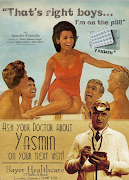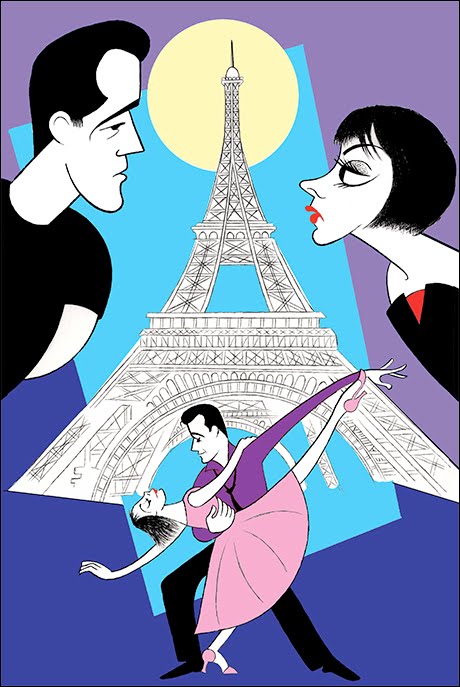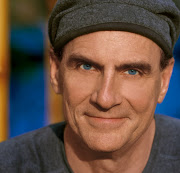 In case the name Bill Keller doesn’t ring a bell, he’s the executive editor of the New York Times. Keller, somewhere in his early 60s, has been a print journalist his entire adult life, and has worked for the Times in one capacity or another for most of his career. So, it is not surprising that he is evidently feeling somewhat intimidated by the emergence of new media, particularly Twitter. Last week, Keller wrote a piece called “The Twitter Trap,” in which he seems to be agonizing over up and coming technology that enables citizens to learn of events in an immediate way. Said Keller, “Whether or not Twitter makes you stupid, it certainly makes some smart people sound stupid.”
In case the name Bill Keller doesn’t ring a bell, he’s the executive editor of the New York Times. Keller, somewhere in his early 60s, has been a print journalist his entire adult life, and has worked for the Times in one capacity or another for most of his career. So, it is not surprising that he is evidently feeling somewhat intimidated by the emergence of new media, particularly Twitter. Last week, Keller wrote a piece called “The Twitter Trap,” in which he seems to be agonizing over up and coming technology that enables citizens to learn of events in an immediate way. Said Keller, “Whether or not Twitter makes you stupid, it certainly makes some smart people sound stupid.”Oh Bill (pictured below, left). Bill, Bill, Bill. Do you know how typical you sound of journalists of your generation? And guess what Bill. I’m not much younger than you, and still I can see that you are feeling threatened by pathways of information that do not require your lifelong accumulation of skills. Let me spell it out: It was via
 Twitter that the world first learned of the unpredictably safe landing of U.S. Airways Flight 1549 in 2010 by Captain Chesley Sullenberger. Remember the great earthquake of 2008 in China? Twitter. Oh, and Michael Jackson’s death? First reported by TMZ.com when major news organizations were unsure whether it was a hoax or not, the story went worldwide via Twitter minutes later. And then, of course, there was the big daddy tweet of them all: Former Defense Secretary Donald Rumsefeld's chief of staff Keith Urbahn first let the world know about the raid on Osama bin Laden's compound - via Twitter. I could go on, but you get my drift – print journalism is not dead, but it’s not keeping up with consumer demand.
Twitter that the world first learned of the unpredictably safe landing of U.S. Airways Flight 1549 in 2010 by Captain Chesley Sullenberger. Remember the great earthquake of 2008 in China? Twitter. Oh, and Michael Jackson’s death? First reported by TMZ.com when major news organizations were unsure whether it was a hoax or not, the story went worldwide via Twitter minutes later. And then, of course, there was the big daddy tweet of them all: Former Defense Secretary Donald Rumsefeld's chief of staff Keith Urbahn first let the world know about the raid on Osama bin Laden's compound - via Twitter. I could go on, but you get my drift – print journalism is not dead, but it’s not keeping up with consumer demand.In the above-mentioned column, Keller wrote:
“My father, who was trained in engineering at M.I.T. in the slide-rule era, often lamented the way the pocket calculator, for all its convenience, diminished my generation’s math skills. Many of us have discovered that navigating by G.P.S. has undermined our mastery of city streets and perhaps even impaired our innate sense of direction. Typing pretty much killed penmanship. Twitter and YouTube are nibbling away at our attention spans. And what little memory we had not already surrendered to Gutenberg we have relinquished to Google. Why remember what you can look up in seconds?”I’d like to answer that: Now that the calculator eased our way to solving math dilemmas, maybe our brains have more room for other endeavors. Do you really believe your “innate sense of direction” is hampered by a G.P.S.? Come on, Bill. Typing killed penmanship? Here’s all I have to say about that…R.I.P. penmanship. The culture evolves in a way that streamlines life. That is what is happening now.
And don’t just take it from me, Bill. Listen to what Gizmodo’s Mat Honan has to say about your ramblings:So, Bill, I’m just wondering: Should we also worry about digital cameras that may have killed the lost “art” of the darkroom? Or, what about birth control devices that now allow us to have as much sex as we want to for pleasure instead of simple procreation? And how about Rachel Ray and her ilk who taught us how to make a full dinner in a half hour? Did Miss Ray effectively kill the all-day cook-a-thons that were once a part of our culture? I could go on, but you get my drift. It is called innovation and progress, Bill. Did you also badmouth that first computer they put on your desk at the Times? Are you similarly reluctant to embrace dating web sites because they eliminate the need for endless small talk, smoke and alcohol in a bar you didn’t want to be in in the first place? Bill, catch up. It is, contrary to your apparent preference, 2011. You do not have to wear a dark suit to work every day and you do not have to even go to work every day if you have yourself properly outfitted elsewhere with the necessary technology.
Oh, and Bill...guess who agrees with me about social media -- your own CEO, Janet Robinson, who told the graduates at NYU's Stern School of Business: “The New York Times has more than 3 million Twitter followers on its main account.That is nearly 2 million more than any other newspaper. We’re proud of that….For some people, all the news that’s fit to print means all the news that fits in 140 characters or less in real time.”
She also said this:
“We used to wonder: If a tree falls in the woods and nobody is around to hear it, does it make a sound? Now we ask: If a tree falls in the woods and your smartphone doesn’t buzz, did it happen?” Janet rocks. And briefly.
I am so discouraged by men and women of my age and older who simply are not ambitious enough to learn the advantages that technology affords us. Keller says Twitter and YouTube are “nibbling away at our attention spans.” No Bill, that is not the case.
 Our attention spans have become shorter because the amount of stimuli around us has increased exponentially, and the sheer volume of information that confronts us requires greater mental time management. We have more to see, hear, learn and discuss because we have allowed ourselves to live outside the 1950s box. The brevity of Twitter and YouTube are simply the current day results of 1980s MTV fast videos, which were that era’s result of mid-century TV sitcoms that told a story with a full conclusion in 24 or 25 minutes. Those sitcoms were really the result of earlier 20th century radio programs that lasted 15 minutes. Those 15 minute shows were the result of an industrial revolution that shortened the waiting time for various types of societal gratification.
Our attention spans have become shorter because the amount of stimuli around us has increased exponentially, and the sheer volume of information that confronts us requires greater mental time management. We have more to see, hear, learn and discuss because we have allowed ourselves to live outside the 1950s box. The brevity of Twitter and YouTube are simply the current day results of 1980s MTV fast videos, which were that era’s result of mid-century TV sitcoms that told a story with a full conclusion in 24 or 25 minutes. Those sitcoms were really the result of earlier 20th century radio programs that lasted 15 minutes. Those 15 minute shows were the result of an industrial revolution that shortened the waiting time for various types of societal gratification. With all of that said, I will add that social media has not yet firmly found its place in our culture. It is still used more for entertainment than for business, education, finance, government, and other essentials. We still have the
 Facebook user who posts, “I am at the grocery store buying peaches.” Who cares? We still have Twitter users whose real goal is only to see how many other Twitter users they can persuade to follow them. We have pop culture celebrities like Ashton Kutcher (above, left) who somehow feel validated because his Twitterverse followers number in the millions. And there is the dark underbelly of it all, such as individuals who lure people with false promises on Craigslist, simply so they can commit crimes including rape and murder. Bill, nobody said we are there yet. But we are making progress.
Facebook user who posts, “I am at the grocery store buying peaches.” Who cares? We still have Twitter users whose real goal is only to see how many other Twitter users they can persuade to follow them. We have pop culture celebrities like Ashton Kutcher (above, left) who somehow feel validated because his Twitterverse followers number in the millions. And there is the dark underbelly of it all, such as individuals who lure people with false promises on Craigslist, simply so they can commit crimes including rape and murder. Bill, nobody said we are there yet. But we are making progress.Down the road, I fully anticipate mainstream media’s acceptance of social media as an equal. We must bear in mind it is in its infancy. Besides Twitter and Facebook, most social media companies have not yet found their footing or their patrons. I envision a social media world in which the free enterprise system exercises its considerable gravitas and earns itself a new and more efficient way of doing business. In the meantime, it matters that we continue to teach people how to write a decent sentence, how to appreciate literature that relied on more than 140 characters to get its point across and how to look at one another eye to eye and tell the truth.
But Bill…listen….about those 2,000-word stories you are still allowing in the Sunday Times? I suggest you let your reporters and writers in on what I tell my journalism students – learn how to say more using fewer words. It’s what I call the Greenberg Rule. There is no turning back, and blame it on Twitter if that makes you feel better, but it really is more about information supply and demand.





















